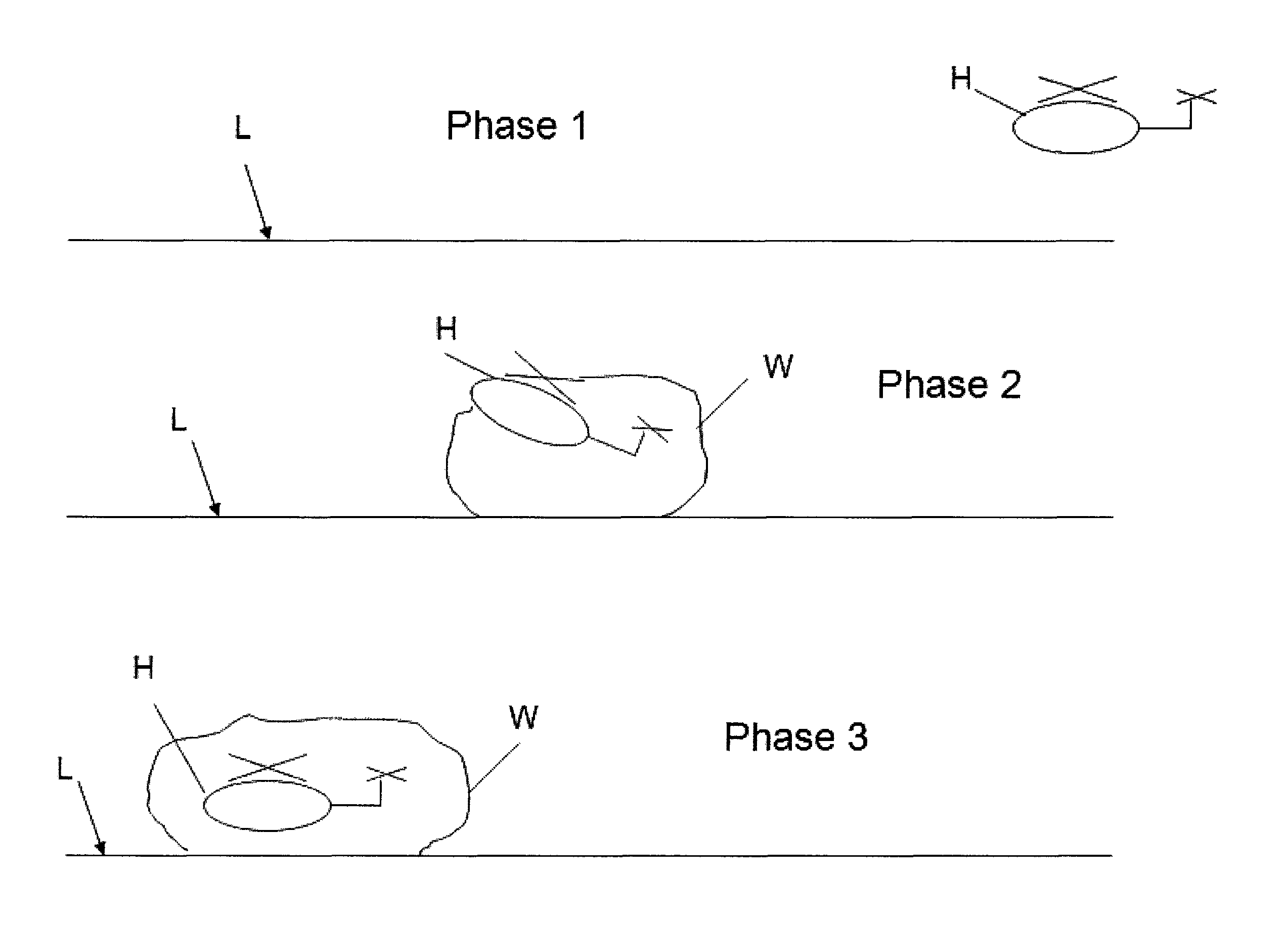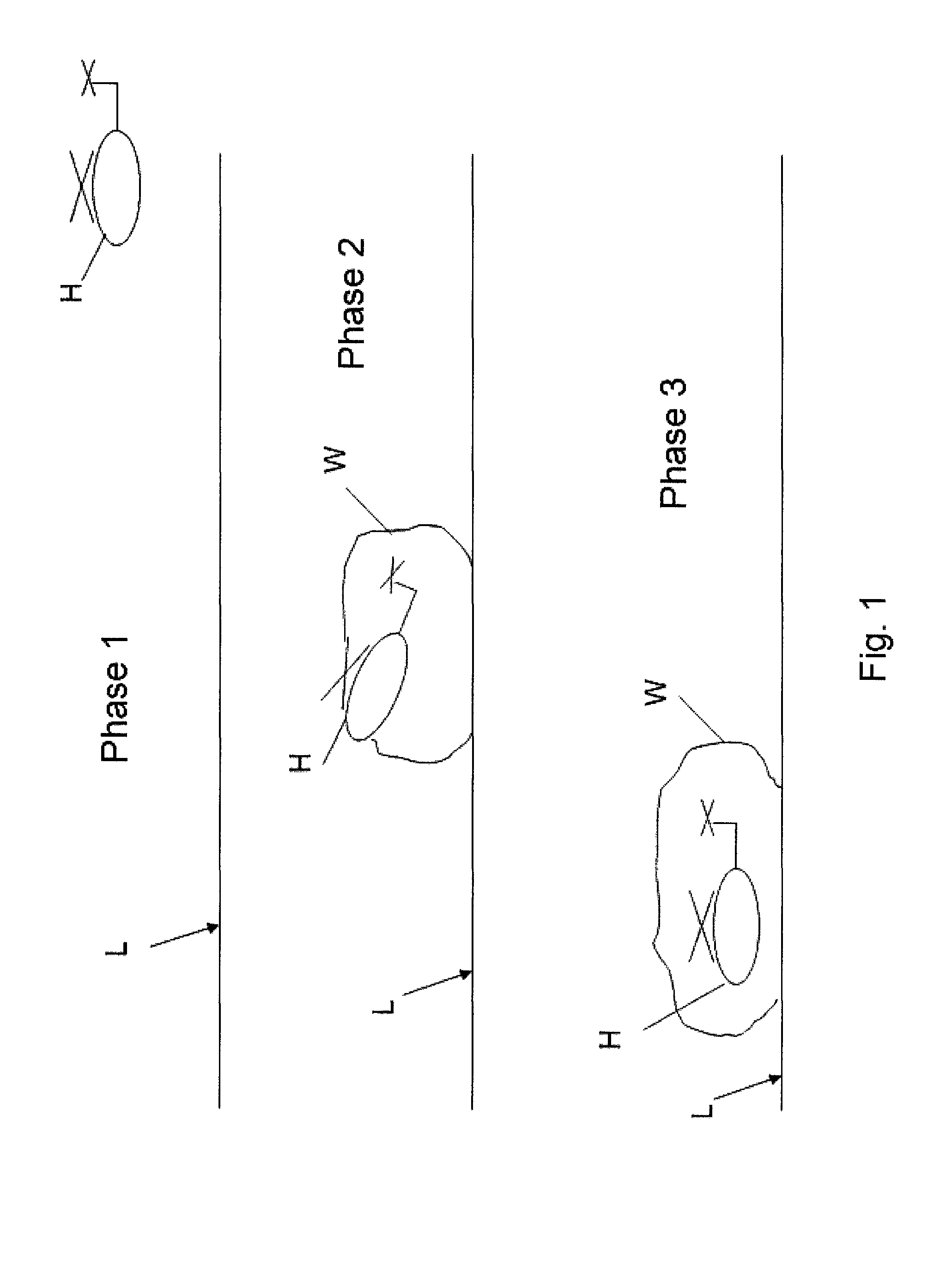Method for producing sensor-supported, synthetic vision for landing support of helicopters under brown-out or white-out conditions
a technology of synthetic vision and landing support, applied in the direction of reradiation, measurement devices, instruments, etc., can solve the problems of helicopter loss, sudden severe impairment of vision, and total loss of situational awareness
- Summary
- Abstract
- Description
- Claims
- Application Information
AI Technical Summary
Problems solved by technology
Method used
Image
Examples
Embodiment Construction
[0011]The landing approach of helicopters H under brown-out or white-out conditions can be roughly divided into 3 phases. Phase 1 is the approach to the landing site L, generally at a defined ink rate on a defined glide path comparable to the descent of a fixed-wing aircraft. Phase 2 consists of a relatively abrupt maneuver to reduce the forward speed at altitudes between 20 and 100 ft. above ground. The reduction in forward speed is normally achieved by a “nose-up maneuver”, in which the pitch angle of the helicopter H is sharply increased temporarily. Different publications present this moment in time as that at which the helicopter H is overtaken by the brown-out cloud W, which still trails behind in phase 1. The helicopter H is now in the brown-out state with largely restricted, sometimes even completely lost external vision as well as the complete loss of the ground reference. Phase 3 is the actual landing process with no or very little forward speed until the helicopter H has ...
PUM
 Login to View More
Login to View More Abstract
Description
Claims
Application Information
 Login to View More
Login to View More - R&D
- Intellectual Property
- Life Sciences
- Materials
- Tech Scout
- Unparalleled Data Quality
- Higher Quality Content
- 60% Fewer Hallucinations
Browse by: Latest US Patents, China's latest patents, Technical Efficacy Thesaurus, Application Domain, Technology Topic, Popular Technical Reports.
© 2025 PatSnap. All rights reserved.Legal|Privacy policy|Modern Slavery Act Transparency Statement|Sitemap|About US| Contact US: help@patsnap.com



